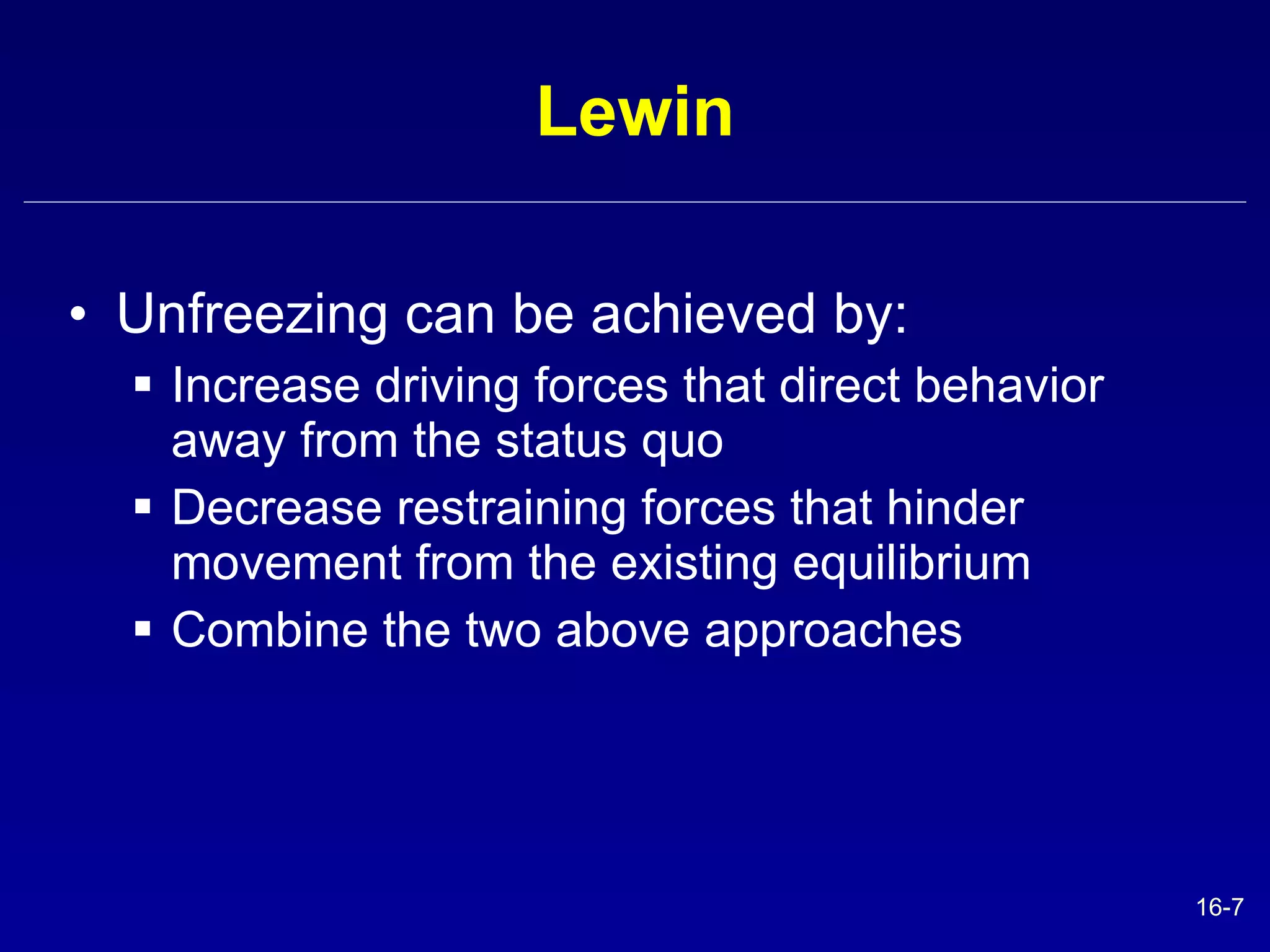This document summarizes key concepts around organizational change and development from the textbook chapter. It describes forces that drive change, contrasts perspectives on change as either steady or disruptive, and summarizes Lewin's three-step change model of unfreezing, changing, and refreezing. It also covers sources of resistance to change, approaches to overcoming resistance, characteristics of learning organizations, and how change efforts may be culture-dependent.





















